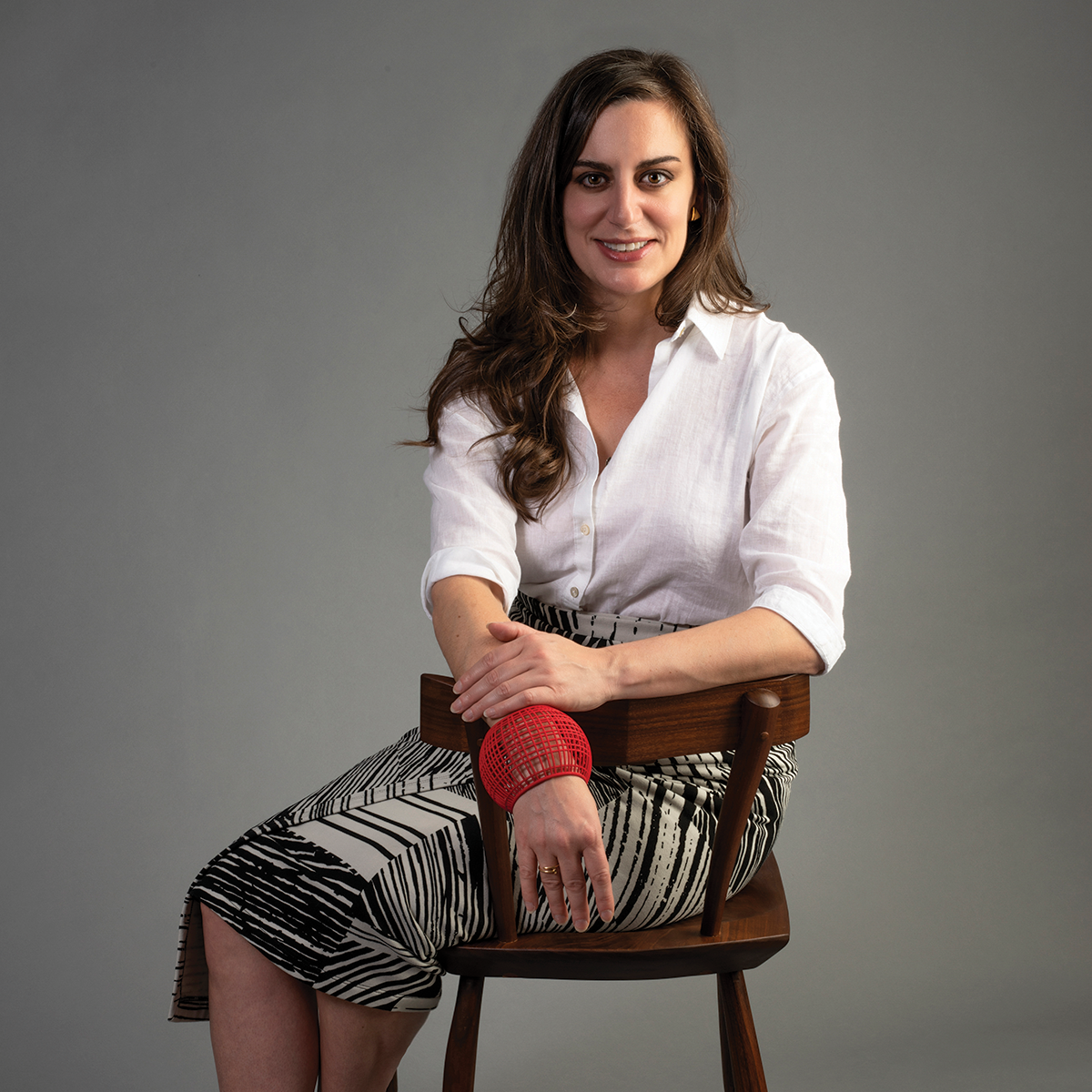

Leila Cartier
Abingdon, Virginia, native Leila Cartier is enjoying success in the art and museum world.
After she left Abingdon, she’s gone on to become the executive director of CraftNOW, Philadelphia, Pennsylvania, and is now the executive director of Houston Center for Contemporary Craft, Houston, Texas. She’s also continued to enjoy expressing herself through her art.
“Since the start of its second year in 2016, I was the Executive Director of CraftNOW, an emerging organization uniting institutions, scholars and artists to promote the historic and contemporary role of the city in the fields of craft and making. My administrative leadership fortified the organization’s original mission, substantially expanded its range and positioned it prominently in the city and nation’s cultural landscape.
“I directed a portfolio of activities that featured Philadelphia’s most renowned arts institutions and included symposia, publications, exhibitions marketing portfolios, tours and many other activities that brought together a network of about 30 galleries.
“In 2021, I began working with educational partners to place craft instruction directly into every city district through the Department of Parks and Recreation’s 120 summer camps. Together we reached over 6,000 kids each, some in some of the nation’s most underserved neighborhoods.
“Around the same time, I worked with an organization in Pittsburgh to develop a new series of programs focused on economic opportunity through craft and participating in the launch of CraftECON and the Keystone Alliance for Creative Economies. These activities supported artists and makers, connected them to business support services and included an annual conference co-hosted with makerspace NextFab,” she says.
All of those activities caught the attention of the Houston Center for Contemporary Craft. HCCC is a nonprofit arts organization dedicated to advancing education about the process, product and history of craft. The center’s major emphasis is on objects of art made primarily from clay, fiber, glass, metal, wood or found/recycled materials.
“HCCC is one of very few organizations dedicated to contemporary craft. We are at the center of the Houston arts community and located in the museum district two blocks down from the Museum of Fine Arts Houston, the fourth largest museum in the nation. HCCC is a national leader in the field known for showcasing innovativeexhibitionsthat span adiversity ofartists and concepts and supporting the development of working contemporary makers through our renownedartist residency program.
“We introduce visitors of all ages to contemporary craft through a variety ofeducational programmingandevents. As the head of the HCCC, my role includes overseeing all aspects of the center’s operations and providing strategic leadership to ensure its continued success. A strong advocate for the arts, I will be actively engaging with the local community and forging meaningful partnerships with other cultural institutions, artists, and stakeholders. The goal is to expand HCCC’s reach and impact, making contemporary craft more accessible to diverse audiences,” Cartier says.
While she still paints, recently she’s chosen to focus on collage. Her first collage exhibition was at Mallory Fine Art Gallery, Abingdon, Virginia, 10 years ago.
Since then, her large-scale installation of collages was exhibited at the Philadelphia International Airport. The curator, Leah Douglas, said the following about Cartier’s work.
“Throughout history, nature has been a source of inspiration for jewelry designers particularly the scarab beetle, worn as ornamental art since the pharaohs of Ancient Egypt. It is Cartier’s unique twist to recreate nature using valueless images of lavish jewelry. She heightens the viewer’s experience of nature through the artifice of opulence, materialism and our perceptions of beauty. For this installation, Cartier has also created a tiled background using similar techniques albeit printed wallpaper. The tile patterns are based on her great grandmother’s home in Hasbaya, Southern Lebanon.”
Her latest exhibition was “Functional Misrepresentation,” curated by InLiquid in Philadelphia. The exhibit highlighted six artists whose works use the shared language of objects to discuss how they act as “vectors of memory: both personal and societal.”
They described Cartier’s work as “focusing on escapism through jewelry these large-scale collages made up of hand-cut images of jewelry from magazines give us a glimpse into a beauty that obscures hidden dangers, excess and the disparity between expectations and reality.
“Objects we encounter can lose their meaning, becoming merely another thread in our daily tapestries. But in the hands of the artists ofFunctional Misrepresentations, once familiar objects are elevated to take on new meanings that challenge us to consider the ways in which we take what seems to be true for granted.”
Her current art project is entitled “67 Attendants,” which is an ongoing series of abstracted portraits based on the crushed skull and headdress on view at The University of Pennsylvania Museum of Archaeology and Anthropology.
“The flattened remains belong to only one of 67 known attendants found in the ‘Great Death Pit’ of Queen Puabi. Both funerary masks and disembodied silhouettes, this collection of collages is a meditation on the impacted lives of others together altered by one individual’s fatal experience,” Cartier says.
To see these attendants and learn more about Cartier, visit www.leilacartier.com.